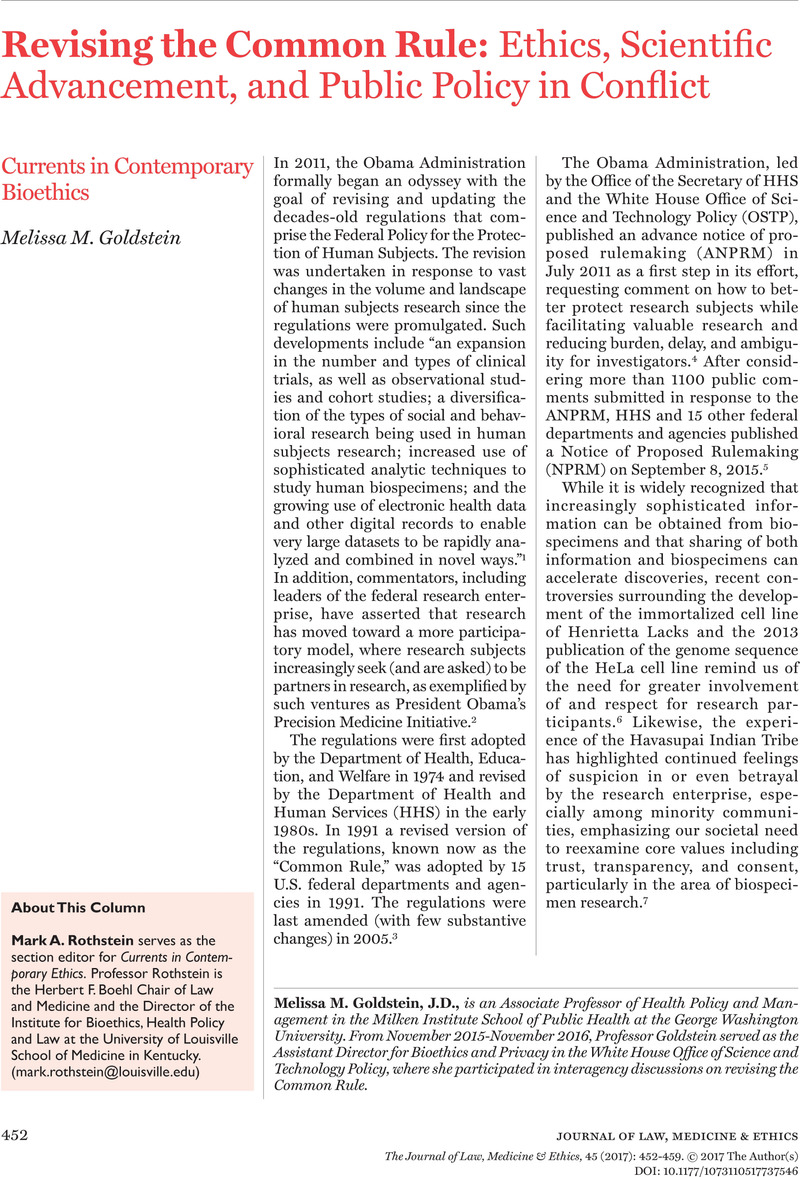Crossref Citations
This article has been cited by the following publications. This list is generated based on data provided by Crossref.
Lynch, Holly Fernandez
Wolf, Leslie E.
and
Barnes, Mark
2019.
Implementing Regulatory Broad Consent Under the Revised Common Rule: Clarifying Key Points and the Need for Evidence.
Journal of Law, Medicine & Ethics,
Vol. 47,
Issue. 2,
p.
213.
Botes, Marietjie
and
Rossi, Arianna
2024.
Building Inclusive Ethical Cultures in STEM.
Vol. 42,
Issue. ,
p.
313.



